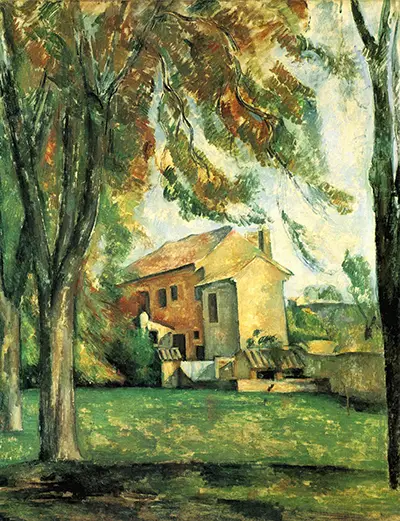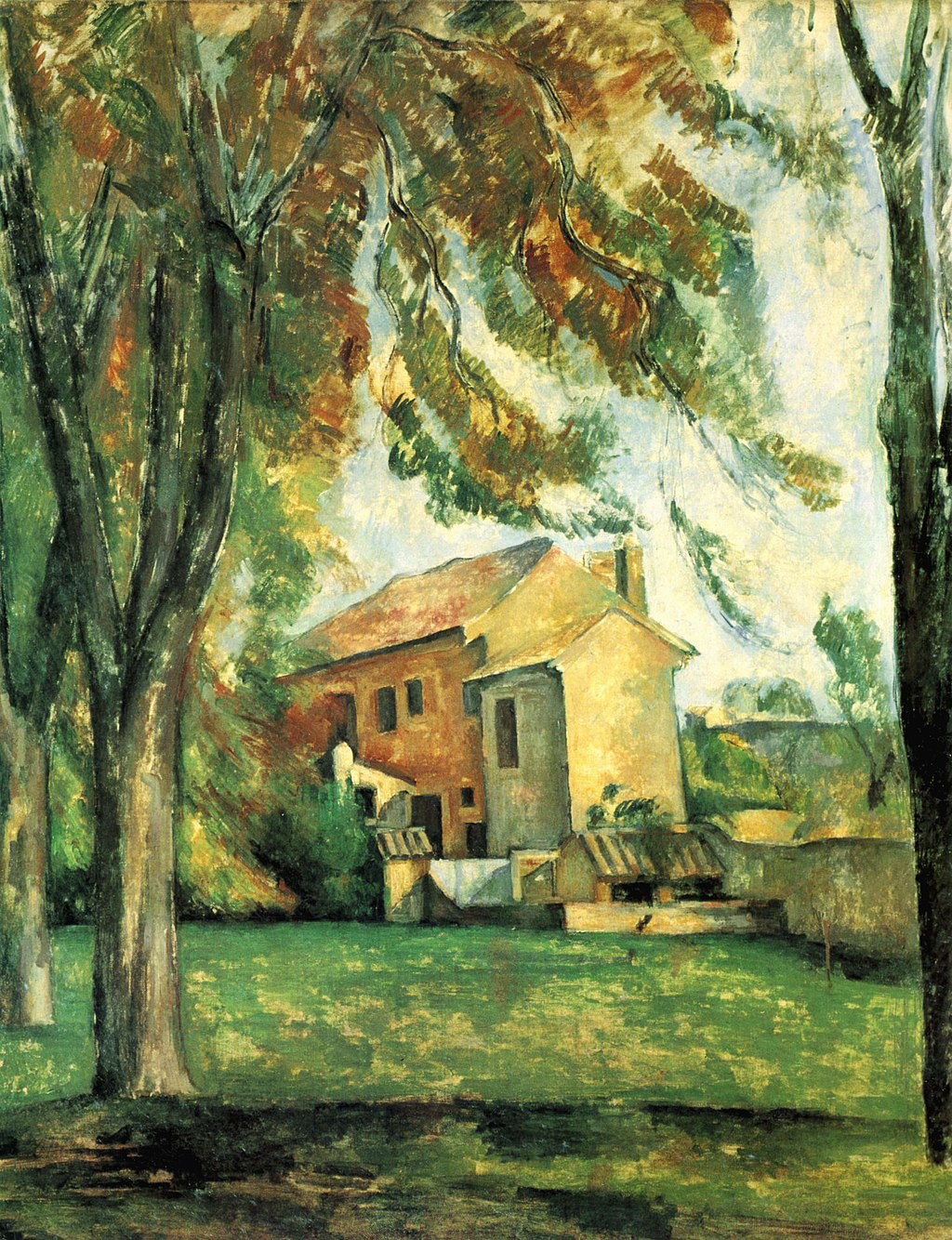 Buy Art Prints Now
Buy Art Prints Nowfrom Amazon
* As an Amazon Associate, and partner with Google Adsense and Ezoic, I earn from qualifying purchases.
Farmhouse and Chestnut Trees at Jas de Bouffan was produced by Paul Cezanne in around 1884-1885. It is one of a large number of paintings that he created within his father's property, with this row of chestnut trees being amongst his most favourite locations.
Perhaps his most famous creation here was L'Allée au Jas de Bouffan (The Driveway at the Jas de Bouffan), but in truth there are many more different interpretations of the same environment. He would alter the angle of attack, bringing in different content across the background. In this example we find the farmhouse appearing in the distance, with the trees serving more on a supportive role. In other works he would focus entirely on the trees and make use of the vertical balance that they could bring to his work. By putting all of these different artworks together we can actually map out, visually, this particular area of the property. The artist's father purchased the property in 1859 and it would remain owned within the family for around forty years in total, helping it to leave an important influence on the artist who developed many of his stylistic innovations whilst working here.
It is believed that this painting was given away to a servant within the property itself and was actually painted with the intention of doing so. The geometric work on the building is typical of Cezanne and marked him out as innovative and unusual for that period. It is possible that he actually used the farmhouse as a studio though this has never been confirmed. He chose not to include the mansion itself in this body of work, focusing instead on some of the smaller outbuildings which perhaps were better balanced with the environment around them and also offered him a greater privacy whilst working. The chestnut trees featured again and again and were one of his favoured spots alongside a pond and a number of statues.
Farmhouse and Chestnut Trees at Jas de Bouffan can today be found within the collection of the Norton Simon Museum which is based in California, USA. Indeed, many of this series are now located across the US and offer local art fans an excellent insight to the direction of European art from across the late 19th century into the early 20th century. Many of the innovations made by Cezanne would be taken on by the next generation and he was often considered to have been the artist's artist. In fact, Claude Monet would include some of this series within his own private collection and always spoke in glowing terms of his love and respect for Cezanne. This particular painting has changed hands several times before coming under the ownership of Robert Ellis Simon who then transferred his collection into the museum and foundation which continue to flourish today.





